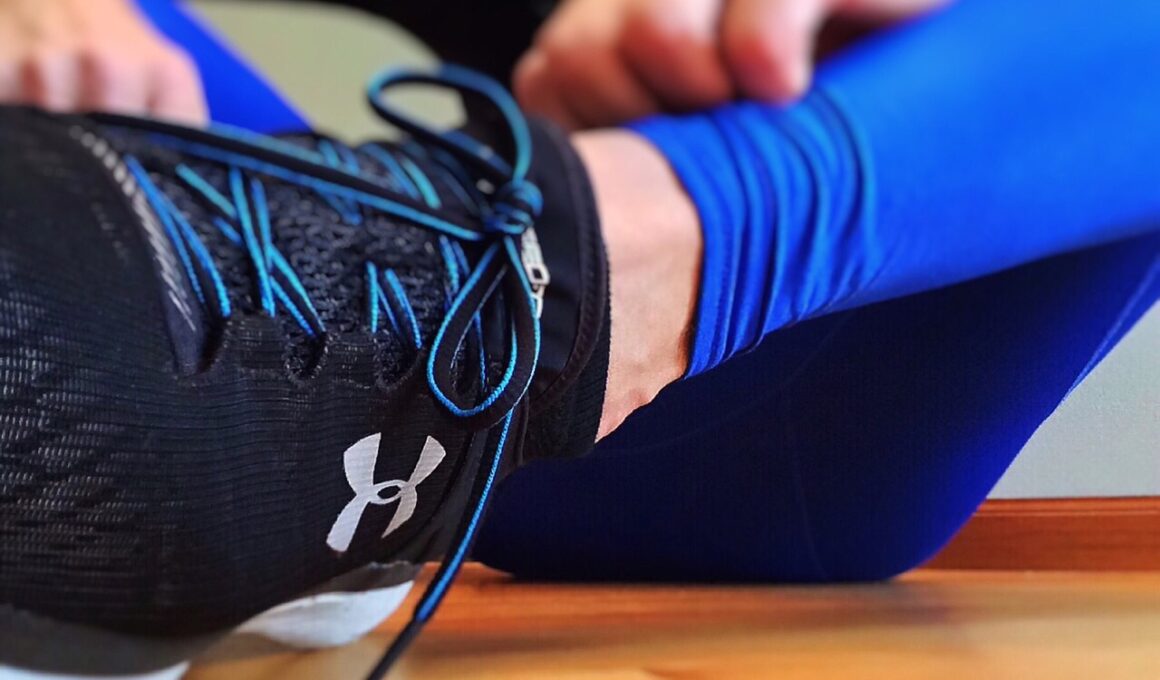The Pros and Cons of Cotton in Running Clothes
Cotton has been a staple in clothing for generations, but its performance in running apparel can be contentious. One significant advantage is its comfort; cotton is soft against the skin, providing a cozy wearing experience. This fabric is breathable, helping runners stay cool during warmer weather. Furthermore, cotton is easily machine-washable, making it a practical choice for daily wear. However, the moisture retention capacity of cotton raises concerns. When runners sweat, cotton absorbs the moisture but does not wick it away from the skin efficiently, potentially leading to discomfort during long runs. In cooler weather, this can become an issue, where wet fabric may chill the body. Additionally, cotton tends to weigh more when wet compared to synthetic materials, which can hinder performance. Some runners find that they experience chafing when wearing cotton due to its tendency to stick to the skin when damp. To conclude, weighing comfort against performance is crucial when choosing running clothes. While cotton offers a range of benefits, it may not be the best option for all runners under every condition.
Another factor to consider when evaluating cotton is its cost-efficiency compared to synthetic fibers. Cotton is relatively inexpensive, making it a popular choice for those on a budget. Many running enthusiasts appreciate the affordability of cotton, which allows them to buy multiple pieces without overspending. However, while the initial cost is lower, cotton garments may not last as long as those made with advanced technical fabrics. Synthetic materials, often more expensive, are designed with durability in mind, resisting wear and tear for a longer lifespan. Additionally, they are more resistant to fading, while cotton may lose its color over time with repeated washings. Another significant advantage of synthetic fabrics is their superior moisture management capabilities. These textiles wick away perspiration efficiently, keeping athletes dry and comfortable during rigorous activities. On the other hand, cotton often leads to a feeling of heaviness as it retains moisture. For those who prioritize performance in their running routines, investing in high-quality synthetic options may ultimately prove to be more economical in the long run, despite the higher upfront cost.
Performance of Cotton in Running Conditions
Understanding how cotton performs in varying weather conditions is essential for runners. During warm climates, the breathability and lightness of cotton can be enjoyable for shorter, casual runs. Nevertheless, for athletes training in more extreme conditions or durations, cotton can become problematic. The moisture absorption capability, as discussed previously, can impede overall performance, leading to significant issues like chafing and discomfort. While some runners may enjoy cotton for short distances, long runs typically require materials that dry quickly. Moreover, in cooler temperatures, wearing saturated cotton can lead to hypothermia risk, as the wet fabric fails to provide adequate insulation. Technical fabric options such as polyester or nylon not only combat these issues by rapidly drying but also help in temperature regulation. They assist in maintaining a balanced body temperature, crucial for performance-focused runners. Therefore, when transitioning between seasons or in unpredictable weather, cotton may not be the best choice due to a lack of adaptability in terms of thermal regulation and comfort during longer exposure to moisture.
Another significant aspect of running apparel is the notion of environmental sustainability with cotton fabric. As a natural fiber, cotton is biodegradable, giving it a more eco-friendly edge compared to traditional synthetic materials derived from petroleum. Many consumers today are motivated by the sustainability movement, seeking out products that minimize their ecological footprint. In addition, organic cotton options exist that are grown without harmful pesticides and chemicals, further enhancing their environmental appeal. However, while cotton has advantages, there are considerations regarding water usage in its cultivation and significant land resource requirements. Running apparel made from recycled synthetics has made gains in recent years, offering an eco-conscious alternative without sacrificing performance. Runners who are environmentally aware might want to assess their options carefully, as the best choice may vary according to individual values and preferences. Striking a balance between sustainability, comfort, and performance can be quite the challenge. Therefore, each runner must consider their priorities; the decision can impact their ecological footprint while factoring in personal performance expectations in both training and competition.
Comfort Level of Cotton in Action
A key factor that many runners appreciate about cotton is its inherent comfort. While on the run, soft fabrics such as cotton can provide a desirable feel against the skin, essential for reducing distractions during physical activity. In addition, cotton’s natural fiber can feel gentler during hot weather compared to stiff synthetic materials. The flexible nature of cotton can allow for a comfortable fit, accommodating varying body shapes and movements without restriction. However, as previously noted, cotton’s tendency to absorb moisture can be a double-edged sword. For short runs, its plush texture can be delightful; however, during extended athletic activity, this attribute can quickly become burdensome when the garment becomes soaked. Wearers may discover that chafing occurs in those persistently damp areas, which can detract from their overall running experience. Therefore, exploring blends that couple cotton with synthetics can offer the best of both worlds—maintaining comfort while improving moisture-wicking properties. In running apparel, marrying comfort with functionality remains the ultimate goal for a successful running experience.
When it comes to fashion, cotton often leads the way in style and variety. Runners appreciate the availability of cotton options in terms of color, design, and cut. Many prefer cotton tees and tanks for their classic aesthetic and casual look that seamlessly transitions from workout to everyday wear. Additionally, various brands offer creative graphics and customizable designs on cotton apparel, providing an opportunity for personal expression while exercising. This versatility in cotton running clothes typically makes them more appealing for recreational runners or those integrating fitness into their lifestyle fashion. Nevertheless, performance-oriented athletes frequently choose technical fabrics to maintain optimal performance during their runs. The variety of designs available in synthetic options has expanded dramatically in recent years, allowing runners to express personal styles while benefitting from advanced fabric technologies. Ultimately, the decision between cotton and other materials often revolves around the runner’s goals; casual runners may prioritize aesthetics over performance, while dedicated athletes might prioritize functionality, opting for high-tech materials that cater to their specific training needs.
Conclusion on Cotton Usage in Running
In summary, cotton presents an interesting mix of pros and cons for running apparel that runners need to weigh carefully. While its comfort, affordability, and classic aesthetic are appealing, cotton may not always hold up against the challenges of intense physical activity. The fabric’s moisture retention can lead to discomfort and hinder performance for those engaged in longer or more vigorous runs. Runners should also evaluate their climate conditions, as cotton may create challenges in both hot and cold environments. In addition to performance concerns, there are important environmental considerations, as cotton is biodegradable but often requires substantial water and land resources. For many, the choice between cotton and synthetic fabrics is ultimately personal, balancing individual needs and ethical preferences. Existential elements surrounding sustainability, performance, comfort, and style intertwine significantly in this decision-making process. Athletes should seek out a diverse wardrobe that accounts for cotton’s advantages while incorporating technical fabrics for optimal performance. Consideration for these different factors can help create an effective running kit that aligns seamlessly with the athlete’s lifestyle, enabling enjoyable and successful runs.
As an athlete evaluating running clothes, understanding cotton’s multifaceted attributes is critical. By embracing both the strengths and weaknesses of cotton, runners can build a balanced wardrobe that meets their specific needs. Experimenting with various fabrics alongside cotton can offer valuable insights into what achieves the ideal balance of comfort, style, and performance. Additionally, it’s advisable to pay attention to individual fabric reactions, as some runners may have sensitivities to certain textiles, prompting them to choose options that suit their bodies best. Engaging in this personalized selection process can unveil the perfect outfit for many types of runs. Ultimately, for a harmonious running experience, runners must remain informed on the characteristics of their gear. It’s advisable to remain open to innovations and advancements in fabric technology that can enhance performance further. The future of running apparel appears promising, with continuous advancements aimed at maximizing comfort and efficiency while minimizing environmental impact. Embracing this journey enables runners to make educated choices, leading to improved experiences. By navigating the pros and cons of cotton appropriately and remaining attuned to personal preferences, athletes can enjoy a more fulfilling running experience.


